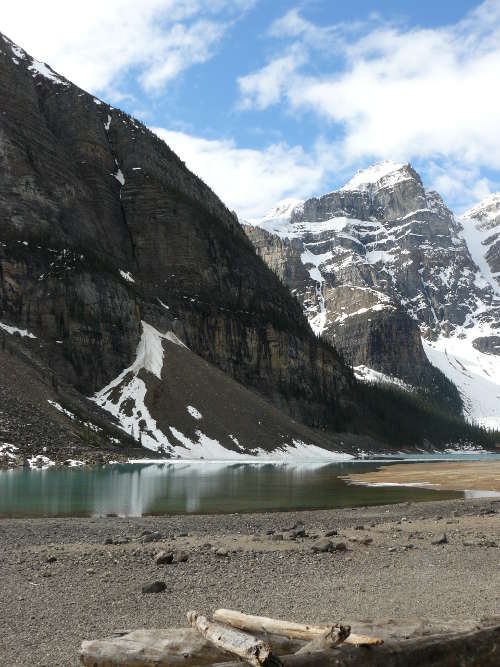 Location Taken: Moraine Lake, Banff National Park, Alberta, Canada
Location Taken: Moraine Lake, Banff National Park, Alberta, Canada
Time Taken: June 2010
Did you hear, did you hear?! Marvelous news! They’ve found another section of the Burgess Shale! And it’s the best one yet!
*All starry-eyed at the thought of all the SCIENCE*
Quick explanation time. The Burgess Shale is an absolutely marvelous rock formation found in an absolutely gorgeous section of the Canadian Rockies. This particular band of shale is just overflowing with fossils, and not just any fossils. These fossils are 505 million years old, from the middle of the Cambrian era, which means they’re some of the oldest fossils ever found.
It’s not that we don’t have rocks from earlier, mind you, it’s that the Cambrian was when life exploded out of its single-cell roots into the many complex forms found today. What makes the Burgess Shale so impressive is that it’s full of impressions of the soft parts of the creatures, which is kind of important because animals hadn’t really figured out stuff like bones at that point. Really good impressions, at that.
Thanks to the marvelous preservation abilities of this shale, we know far more about the early stages of animal life on this planet than we do about many much more recent eras. This includes some of the most fascinating examples of what life has tried out, such as the marvelously named Hallucigenia and the fascinating Anomalocaris. Imagine if the prevalent form of animal life today had come out of creatures like those rather than ones like humble Pikaia.
It might not look like much, but Pikaia had a real backbone! I mean that literally, it had a spine and the central nervous system that goes with it. A primitive one, sure, but this is from a time when primitive was brand new. Some scientists think it may be the common ancestor of all the animals that have spines, which, if you hadn’t noticed, included humans.
Alright, now that we’ve established how fabulous this stone is, on to the recent discovery!
About 25 miles south of the main fossil site of the Burgess Shale lies the Marble Canyon. It’s on the other side of the mountains in this photo, by the way. As you’d expect from mountainous terrain, the area is difficult to get into. However, reports of a few fossils found in the canyon, plus geological research into where another outcropping of the shale might appear, lead the Royal Ontario Museum to send out an expedition into the high mountains of Kootenay National Park.
And oh boy did they hit the jackpot. After 100 years of extensive work on the old quarry, around 200 species of these strange critters were found preserved in the rocks. After just two weeks, the expeditionary force came out with examples of about 50 species, several of which were completely new.
Imagine how happy all the Cambrian scholars must be right now. I’m merely fond of the Cambrian creatures, and I’m grinning in excitement. There’s so much more to be LEARNED out there!
